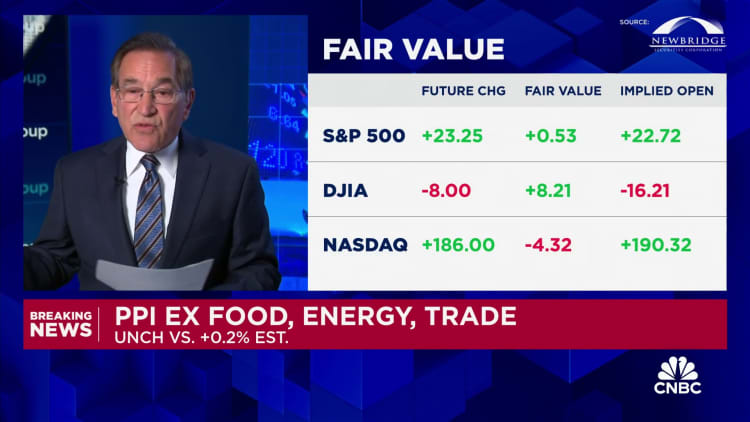
Wholesale prices unexpectedly fell 0.2% in May
CNBC
The producer price index, a gauge of prices that producers get for their goods and services in the open market, declined 0.2% for the month against expectations for a 0.1% increase. PPI was held back by a 0.8% decrease in final demand goods prices, which was the largest decline since October 2023. In other economic news, initial claims for unemployment insurance jumped to 242,000 for the week ended June 8. That’s the highest level since August 2023.
A measure of wholesale prices unexpectedly decreased in May, adding another piece of evidence that inflation is pulling back.
The producer price index, a gauge of prices that producers get for their goods and services in the open market, declined 0.2% for the month, the Labor Department’s Bureau of Labor Statistics reported Thursday. That reversed a 0.5% increase in April and compared with the Dow Jones estimate for a 0.1% rise.
Excluding food, energy and trade services, the PPI was unchanged, compared with expectations for a 0.3% increase.
On an annual basis, the all-items PPI rose 2.2%.
Stock market futures saw some modest gains following the report while Treasury yields moved lower.
The release comes a day after the BLS reported that the consumer price index, a widely watched gauge of inflation that measures what consumers actually pay for goods and services, was unchanged on the month.
From the wholesale perspective, the PPI was held back by a 0.8% decrease in final demand goods prices, which was the largest decline since October 2023. Within the category, the energy index tumbled 4.8%. Food prices fell 0.1%.
On the services side, fuels and lubricants retailing margins surged 12.2%, but that was offset in part by a 4.3% plunge in airline passenger services prices.
The release comes a day after the Federal Reserve noted “modest further progress” in bringing inflation back down to its 2% target, but not enough for the central bank to start lowering interest rates. The Fed has held its benchmark borrowing rate in a targeted range of 5.25%-5.5% since July 2023 as it awaits more evidence that inflation is heading back to the central bank’s 2% target.
In other economic news Thursday, the Labor Department reported that initial claims for unemployment insurance jumped to 242,000 for the week ended June 8. That’s the highest
CNBC
The full article is available here. This article was published at CNBC Economics.
Comments are closed for this article!